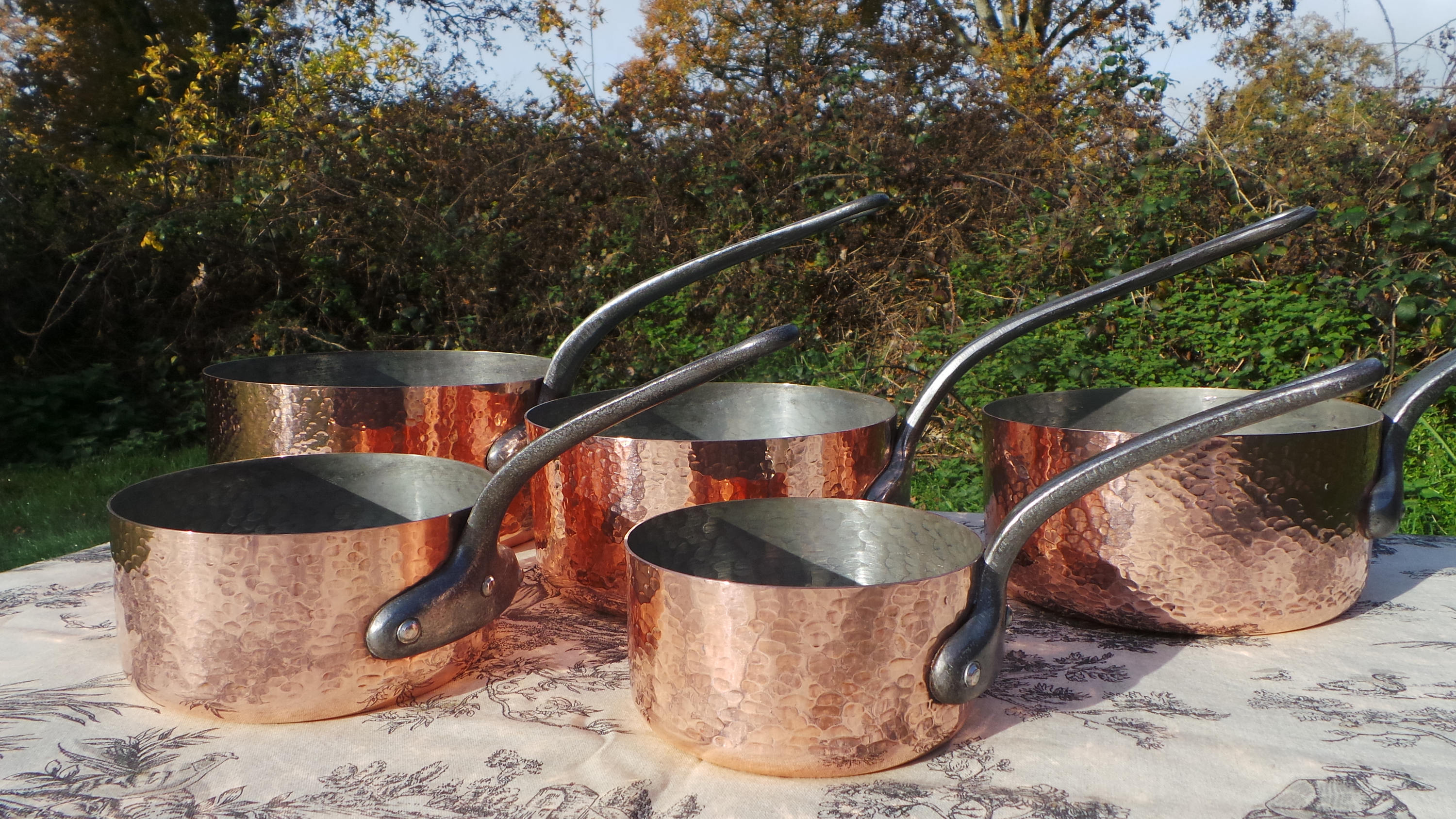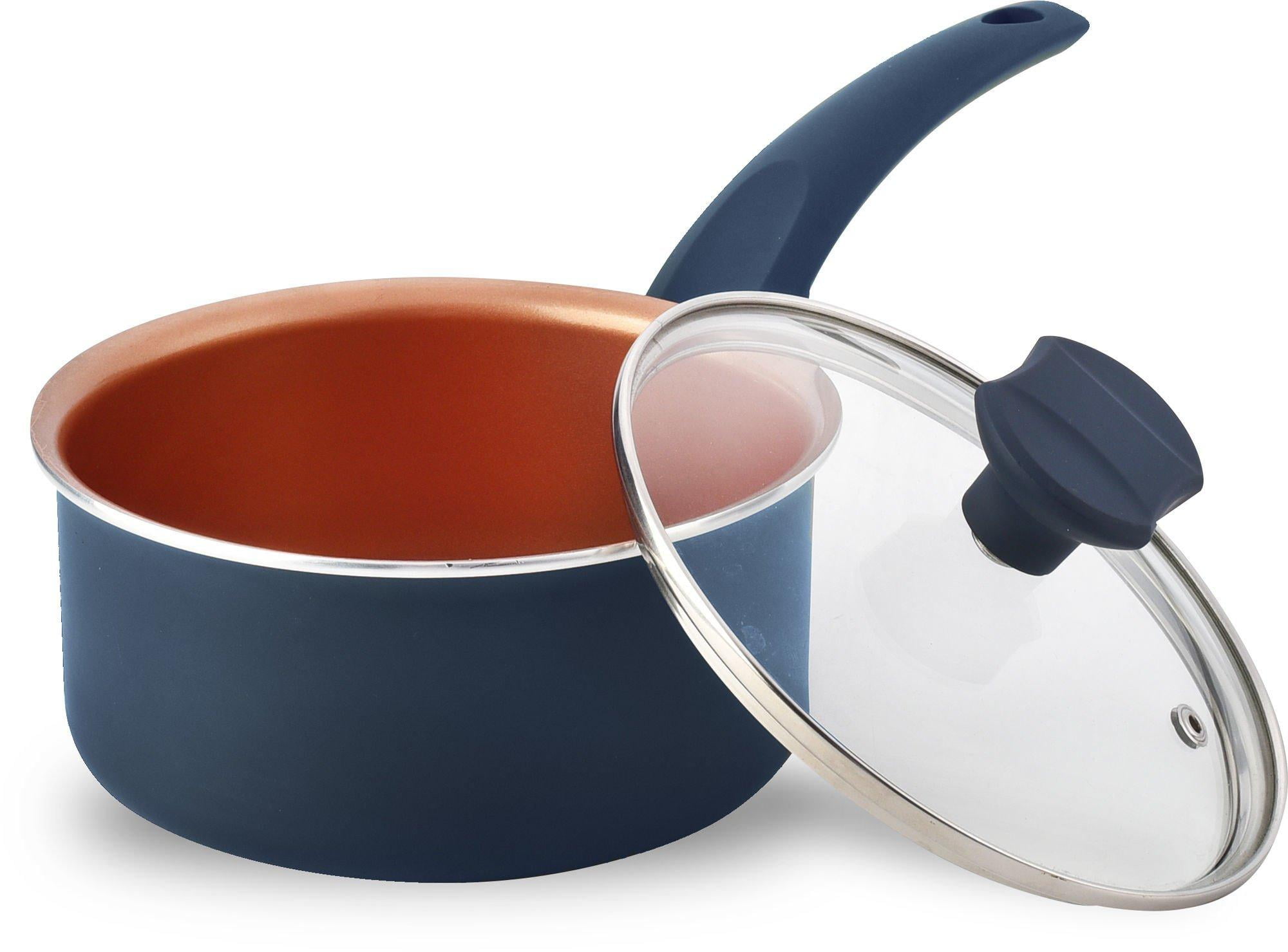

A single pot typically runs at least $100 and a full set can easily set you back thousands. Many love to show it off on their counter tops or hang them off kitchen ceilings. The simple fact that it is gorgeous and aesthetically pleasing is a popular reason why consumers purchase copper cookware. There's no denying it - copper cookware is a head turner. Tin or steel lining on the inside creates a protective barrier between the food and the exterior that makes copper heat safe. Copper is resistant to microbes, so germs and bacteria can't survive on the surface. "Fine-dining restaurant chefs praise copper cookware because, if used wisely, it has the ability to cook delicate dishes like fish, savory sauces, and caramel better than any other material," says Brooklyn-based baker Erin Emmett of Sweet Pistachio.
#Copper cookware professional
Copper's even temperature control and conductivity is beloved by professional chefs, but it's also great for the enthusiast or serious home cooks who frequently make delicate proteins and sauces prone to breaking.

And unlike cast-iron, it also cools down quickly when you remove it from the stovetop copper transfers heat five times more efficiently than iron.

Ever notice that food can sometimes turn out half-done in your pans? Copper warms up quickly and spreads heat evenly, so there are no hot or cold spots. So, you're already mesmerized by copper cookware's beauty, but is it worth the price tag? We consulted culinary experts about the qualities that make copper cookware worth the investment - as well as some things to consider when deciding to add to your cart. This option tends to be the least expensive. Unlined or "bare" copper cookware is often found in the form of mixing bowls since copper helps with tasks like stabilizing egg whites. "Vintage and classic French brands are lined with tin on the inside and over time with repeated usage, need to be re-tinned or re-stained to prevent the copper from leaching into the food," says Palak Patel, chef at the Institute of Culinary Education. There's also a stainless steel lining option for extra durability. Traditionally, tin is the go-to lining for copper cookware because it's also malleable, mostly non-stick, and doesn't react with acidic foods. One common question that comes up when shopping for copper pots and pans: to go bare or lined? Because of its luxe look, copper is often used on the exterior of the cookware, "either as a thin decorative layer or as a thicker, functional layer, particularly on the bottom of the pan," says Harris. What's the difference between lined and unlined copper? Quick tip: If you're looking to invest in a copper cookware, Insider Reviews has selected the best sets at every budget. Think: delicate proteins such as fish, finishing sauces, caramels, and emulsions. This responsiveness and conductivity makes copper cookware perfect for cooking foods that require steady heat and precise temperature control, like a high sear or quick simmer. It's twice as conductive as aluminum and 10 times more conductive than stainless steel, according to chef Kysha Harris of personalized cooking service SCHOP!. What is copper cookware?Ĭopper is a naturally-occurring, highly-conductive metal that's very responsive to heat changes. Given copper's sustained popularity and pretty patina, home cooks may be curious about its uses, cost, and care - all important factors that will ultimately help determine if the rose-colored cookware is right for their kitchen. It's a timeless showstopper beloved by professional chefs and culinary legends, gracing the walls of Julia Childs' iconic kitchen and hanging luminously from Martha Stewart's ceiling pot rack.

When it comes to cookware, copper is a classic material.


 0 kommentar(er)
0 kommentar(er)
